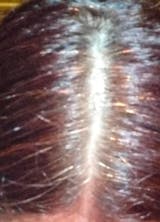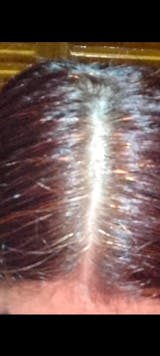Winter Hair Care Guide: How to Repair Damage, Restore Shine and Use a Keratin Mask the Right Way
In this blog we will review the real benefits of proper hair care using keratin mask which is One of the most common hair care products. They are the top option for those who struggle with dryness frizz or breakage because they guarantee stronger shinier and smoother hair. However, a frequent query is always raised: How often should one really use a keratin hair mask? No one-size-fits-all solution exists. Your lifestyle hair type and most importantly the climate in which you live all influence the appropriate frequency. Given Pakistan’s distinct climate it becomes imperative to modify usage appropriately. Let’s investigate how to maximize the benefits of keratin masks under our circumstances.\
What is a Hair Mask made of Keratin?
The protein called keratin is responsible for the structure of your hair. This natural protein is harmed over time by dust pollution intense sunlight frequent heat styling and chemical treatments like rebounding or coloring. With much more potency a keratin mask functions similarly to a deep conditioning treatment. It fills in the spaces along the hair cuticle repairs internal damage penetrates deeper and soothes the hair again. In contrast to ordinary conditioners keratin masks restore lost protein in your hair and produce longer-lasting results. The golden rule however is moderation: too little use wont produce results while too much can leave your hair limp and oily.
How Keratin Hair Mask Repair Damage and Restore Shine
Damaged cuticle layers that are unable to reflect light are frequently the cause of dull rough or shiny hair. This is the issue that keratin masks aim to solve. They restore structural damage and smooth the outer layer of your hair by coating the strands and reintroducing lost protein. Stronger and healthier strands as well as a glossy finish that glows organically in the light are the end results. Keratin masks can serve as both a shine enhancer and a repair therapy for hair in Pakistan where elements like humidity dust and hard water constantly weaken hair. They are a useful and efficient remedy for common hair issues because regular use helps minimize breakage manage frizz and restore softness.
Pakistani Climates Effects on Hair
Different climates in Pakistan have different effects on hair. Frizz becomes nearly impossible to control in sweaty urban areas like Karachi and other coastal regions. On the other hand, hair rapidly loses its natural moisture in hot dry climates like Lahore, Multan and most of Sindh which makes it brittle. While heavily polluted urban centers like Karachi Lahore and Islamabad expose hair to dust and smog that gradually wear down the cuticle cold mountainous regions like Murree Gilgit and Kashmir cause dryness and static during the winter. In short hair is constantly stressed regardless of where you live in Pakistan. In order to maintain healthy hair throughout the year keratin masks are therefore more than just an optional treatment.
What’s the Recommended Keratin Mask Use Frequency?

Every two weeks is usually sufficient for people with normal hair. Despite Pakistan’s dusty and dirty air this frequency serves as maintenance and keeps hair smooth. Keratin masks are more frequently required by people with dry or chemically treated hair such as that which has been colored rebounded or heat-styled. Weekly use strengthens the strands restores protein and stops additional breakage. You have oily hair if your scalp produces too much oil. Keratin treatments should be limited in this situation. Because too much can make the hair look greasy and weigh it down once every three weeks is plenty. Finally, frizz is your worst nemesis if you reside in a humid coastal region including Karachi. If so, a weekly keratin mask will help control frizz and smooth the cuticle.
Also Read: What Makes a Keratin Intense Repair Cream Different from Regular Conditioner or Mask during winter?
Changing with the Seasons
As the seasons change so should your keratin regimen. It is advised to apply once a week during the summer months especially if you spend a lot of time outside as the sun perspiration and heat can cause damage and dryness. Once more a weekly routine works best because the high humidity of the monsoon makes frizz uncontrollable. A biweekly mask can help hydrate and soften otherwise coarse hair during the winter months when dryness is at its worst.
Indications of Overuse
Some people start using keratin masks too frequently because they are overly enamored with the smooth finish. It’s not too difficult to spot the symptoms of excessive use. It’s time to cut back on frequency if your hair still feels oily or sticky after washing if it appears lifeless and flat rather than bouncy or if buildup causes your scalp to itch. Resetting your hair can also be achieved by switching to a gentle clarifying shampoo.
The Proper Use of a Keratin Mask
Effective technique has a significant impact. To clean and remove dirt from your scalp always begin with a shampoo that contains no sulfates. Apply the mask to damp hair but not soggy. Pay attention to the mid-lengths to ends of the hair not the scalp. According to the directions leave it on for 10 to 20 minutes then thoroughly rinse with lukewarm water. Let your hair air dry or use a low heat blow dryer for optimal results.
Pro Tip: To avoid making your scalp greasy avoid applying the mask close to the roots especially in humid climates.
Keratin Masks in Conjunction with other Forms of Care
The best results from a keratin mask are obtained when paired with a healthy regimen. Sulfate-free shampoos stop protein loss and a heat protectant spray applied before styling shields hair from additional harm. A protein-rich diet which includes foods like eggs nuts and lentils strengthens your hair from the inside out and regular haircuts help you avoid split ends.
Why Keratin Masks Are More Important for Pakistani Hair
Pakistani hair care regimens present particular difficulties. In urban areas like Karachi and Lahore hard water causes hair to become dull and coarse while dust and pollution harm the cuticle. Conventional practices that strip hair of keratin include frequent straightening tight buns and excessive oiling. A keratin hair mask helps restore the smoothness of hair fills in the gaps and repairs protein loss in all of these situations.
Also Read: Keratin Smooth & Thick Shampoo & Conditioner, the Ultimate Hair Care Solution
Conclusion:
Maintaining equilibrium is essential. When applied properly, keratin hair masks can significantly improve hair concerns in Pakistan’s climate like:
If you have normal hair, you can use it in every two weeks. Once a week for dry or damaged hair. For oily hair, use in Every three weeks. But if you have frizzy and damaged hair so you should once in every week. You should pay attention to your hair. Use it less frequently if it feels heavy and a little more frequently if it feels dry. Keratin hair masks are essential because Certain products are not suitable for the conditions in Pakistan. In addition to keeping hair manageable and light The Needs Keratin Hair Mask is made to repair damage and restore shine. Ideal for our regions climate it reduces frizz softens texture and restores strands that have been chemically treated or damaged by the elements. When applied sparingly but consistently it gives your hair the sleek salon-like finish you’ve always desired without making it feel heavy.





